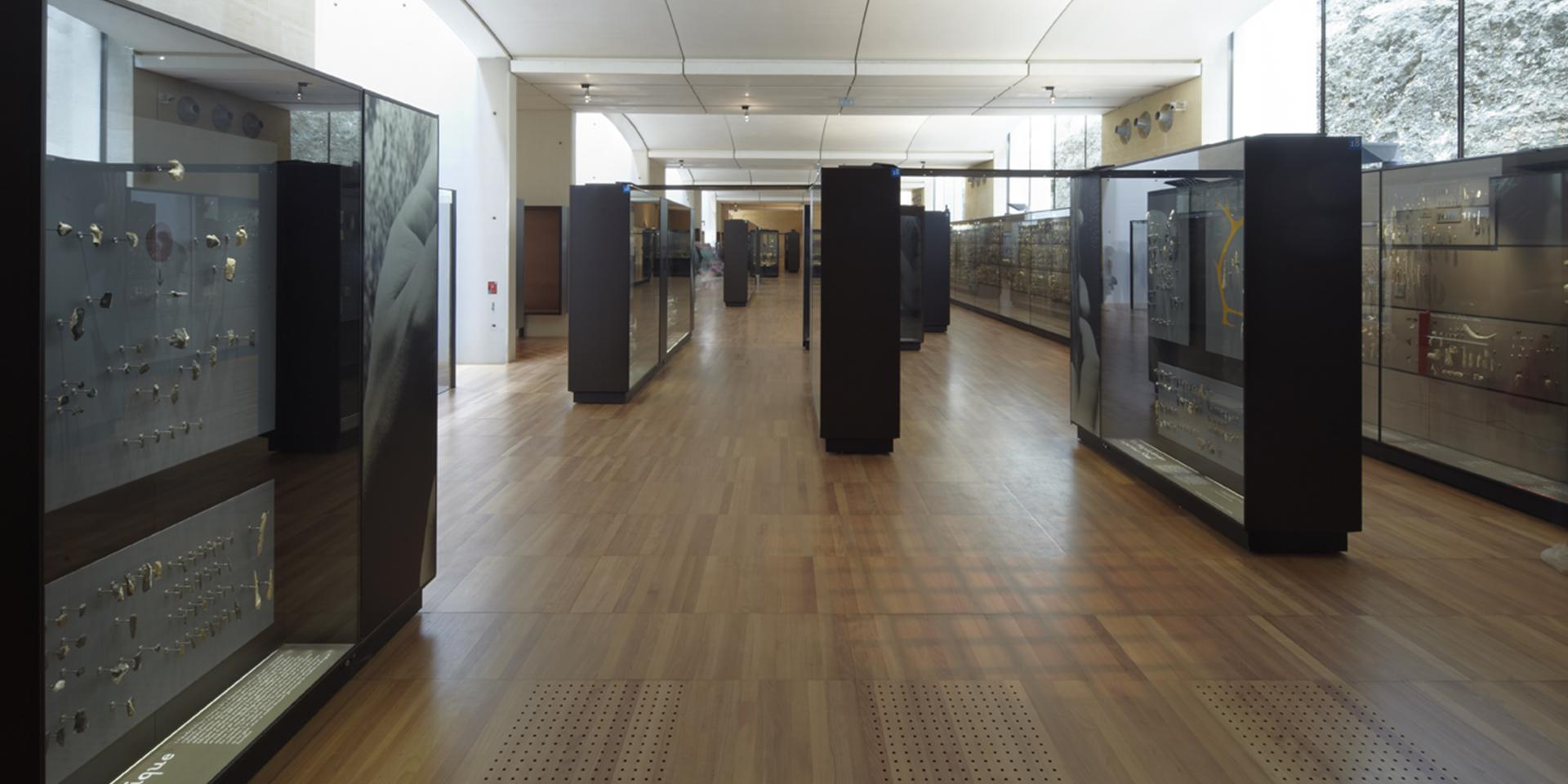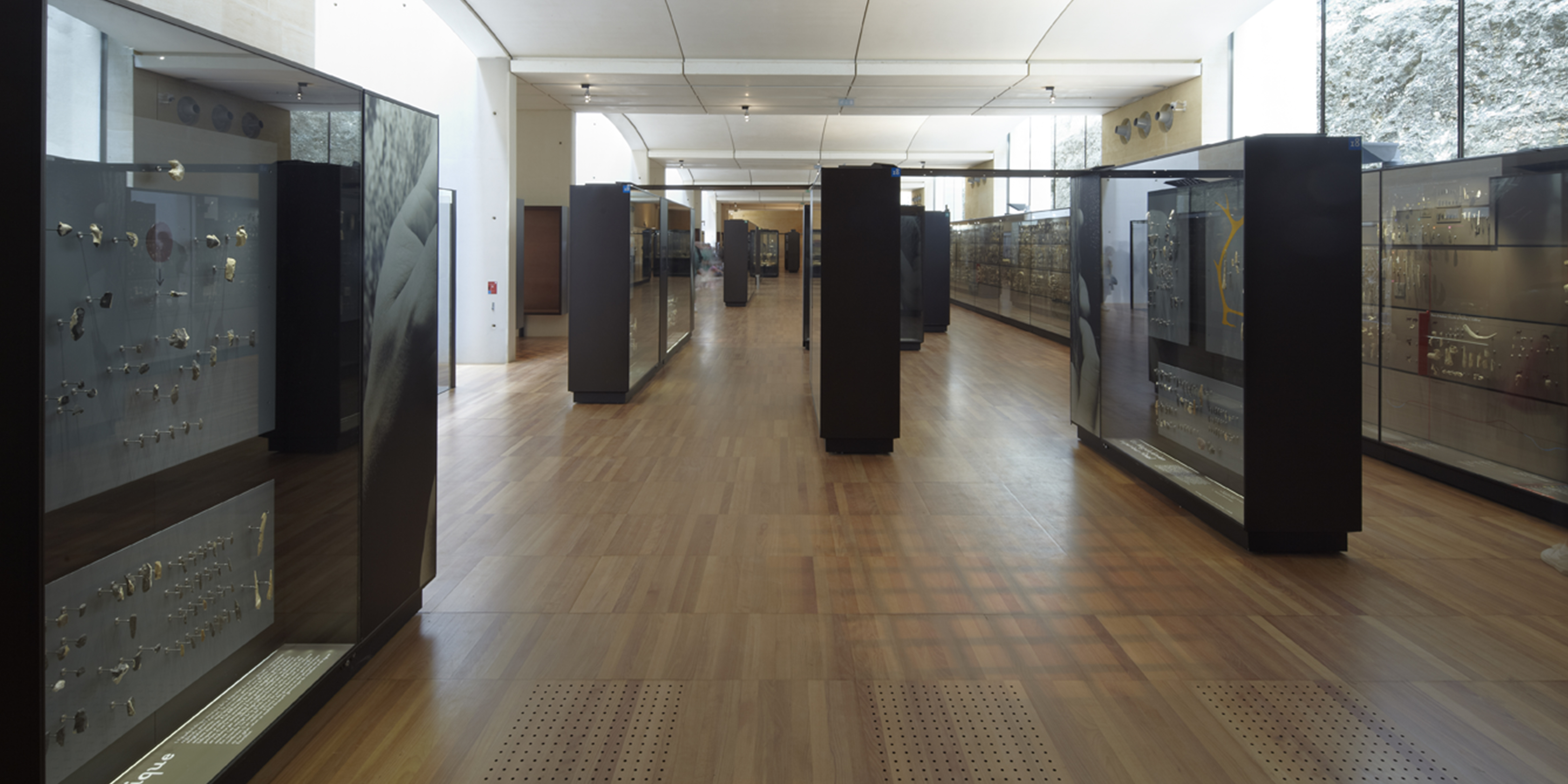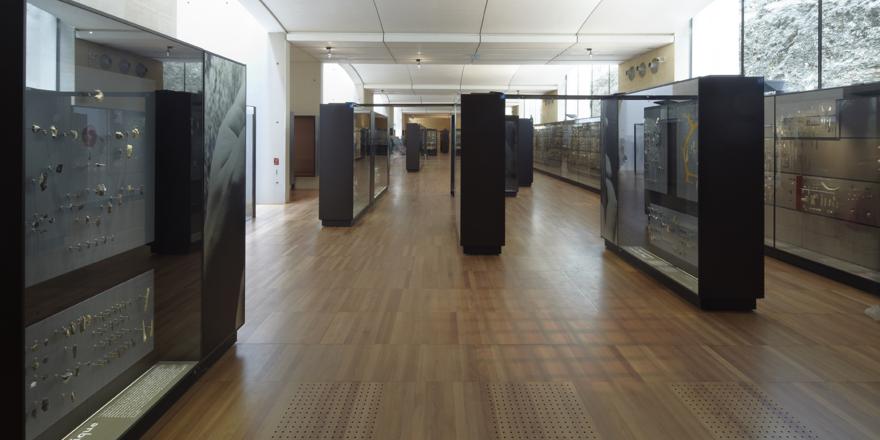
Les espaces
Lower Gallery
All along the length of the gallery, the different material cultures of the hunter-gatherers that come one after the other beginning in 400,000 to 10,000 B.P. unfold in the lower gallery. Divided into different periods by the architecture (lower and middle Palaeolithic, upper Palaeolithic, the end of the ice ages…), the space is given structure by the large “Passage of Time” display.
The true backbone of the lower gallery, the Passage of Time Display has four long patterned bands superimposed on about fifty metric units simulating the netting of time. The lower band is consecrated to the environment, and the three others comprise, for each unit, industrial and zoogeographic sets chosen in a statistical way for each archaeological layer.
In line with the Passage of Time Display, the crosswise route allows visitors to follow the evolution of cultures, the first tools, made first of stone then of bone, their specifications, in short, their adaptation to climate fluctuations, especially the ice ages that have clear repercussions on the botanical environment and the fauna, two things that the survival of Palaeolithic populations directly depended on.
For each culture there is information available for visitors dealing with the material aspects (typology, tool and weapon technology) and also the Paleoethnographical aspects (anthropology, funeral traditions and social organisation, acquisition activities, symbolic expression…) and also Paleo-environmental aspects (fauna.
To learn more about the “Passage of Time Display”
The lower band shows the climatic variations that marked the Pleistocene epoch and illustrates the consequences with five plant environment overview boards and three recreations of the local landscape in various climates.
Based only on the animals hunted by Palaeolithic man, the zoogeographic band also contributes to the environmental approach by signalling the presence of cold-climate animals (muskoxen, reindeer, Saiga antelopes…) or those living in more temperate climates (deer, bovines…).
The third band summarizes the sequences of the great reference sites whose industrial assemblies are dated in relation to their stratigraphical position.
The third band summarizes the sequences of the great reference sites whose industrial assemblies are dated in relation to their stratigraphical position.
The Crosswise Route
In line with the Passage of Time Display, the crosswise route allows visitors to follow the evolution of cultures, the first tools, made first of stone then of bone, their specifications, in short their adaptation to climate fluctuations, especially the ice ages that have clear repercussions on the botanical environment and the fauna, two things that the survival of Palaeolithic populations directly depended on.
For each culture there is information available for visitors dealing with the material aspects (typology, tool and weapon technology) and also the Paleoethnographical aspects (anthropology, funeral traditions and social organisation, acquisition activities, symbolic expression…).
Other aspects that are addressed:
- The first traces of human settlement in south-western France (“The First Aquitani”)
- The lifestyle of the Neanderthal populations (“The Time of Neanderthal Man”)
- The arrival of modern man (The Upper Palaeolithic”…)
- The upper Palaeolithic cultures (Aurignacian, Gravettian, Solutrean, Magdalenian)
- The end of the ice ages…
In the same way, the “fauna notes” allow visitors to go back to the environmental conditions of each period through a new section of the visit based on an education presentation with:
- reconstructed skeletons (bison, reindeer, Saiga antelope)
- Moldings (a hyena’s den, a Woolly rhinoceros…)
At the end of this section of the visit, after a mention of the Neolithic and the Bronze Age, a concept of the morphological evolution of the regional landscapes is displayed on a multimedia model, complete with a summary of the territorial organisation of Prehistoric time.


